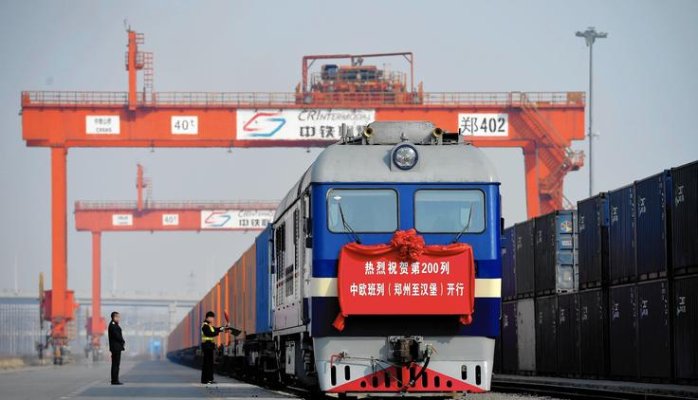
In a recent article Russia’s reputed periodical Expert Online suggests China is pushing Russia to link its Eurasian Economic Union (EAEU) project with China’s plans for the New Silk Road — a transcontinental network of railroads and highways allowing direct transit of China’s exports to the European Union. The article draws a picture of Russia’s reluctant acceptance of the inevitable Chinese expansion to the west and the subordinate role that the EAEU will play in such expansion.
The reality is somewhat different. The linking of the two projects will give a huge boost to the EAEU development and bring direct dividends to the Russian economy in particular. The speculations of whether China will prefer the so-called “northern route” (via Russia) or the “southern route” (via Turkey) for the land transit of its goods will be put to rest. It will use both.
 Moreover, both Russia and China will be well advised to develop the “in-the-middle” option, which will streamline the transit and shorten the travel time comparing to other alternatives. This third route would go via Kazakhstan and the southern Russia (or Georgia), across the Crimean peninsula and then, by a short ferry, to the Black Sea ports of the EU members Bulgaria and Romania.
Moreover, both Russia and China will be well advised to develop the “in-the-middle” option, which will streamline the transit and shorten the travel time comparing to other alternatives. This third route would go via Kazakhstan and the southern Russia (or Georgia), across the Crimean peninsula and then, by a short ferry, to the Black Sea ports of the EU members Bulgaria and Romania. The Expert Online article mentions China’s Silk Road Fund investments in Russia, of which the most noticeable so far has been buying of the 9.9% stake in the liquefied natural gas (LNG) Yamal project in Russia’s Far North. The opening of a plant for the production of refrigerators of the Chinese Corporation Haier in Tatarstan is another noteworthy project.
The Expert Online article mentions China’s Silk Road Fund investments in Russia, of which the most noticeable so far has been buying of the 9.9% stake in the liquefied natural gas (LNG) Yamal project in Russia’s Far North. The opening of a plant for the production of refrigerators of the Chinese Corporation Haier in Tatarstan is another noteworthy project.
Yet the bigger prizes lie elsewhere. China may facilitate construction of the Kerch Strait bridge by the Russian contractors by giving both money and know-how. The bridge, to be completed by 2018, will connect Russia’s mainland with Crimea. China may further invest into the development of Russia’s Azov-Black Sea port infrastructure and the Ukrainian port of Odessa, while extending a trunk of it New Silk Road via Ukraine. Beijing’s money may cool heads in both Kiev and Moscow, thus facilitating the Ukrainian-Russian rapprochement.
The Kerch Strait bridge project was once approved by Ukraine’s government, only to be denounced after the Maidan revolution. Perhaps, Kiev will reconsider its decision if granted a share in the international consortium that may still be established for the joint exploitation of the bridge. After all, Ukraine’s attempts to challenge the construction of the bridge by means of an international legal action will probably lead to nothing. Yet, Ukraine’s demanding a piece of action because of its rights to the internal waters of the Sea of Azov may still work.
Of course, it leaves the larger question of sovereignty over Crimea and the legality of its annexation by Russia open for the time being. Ukraine will never accept the legality of annexation nor should it. But, as the example of Taiwan shows, unofficial acceptance of the status quo does not require renunciation of sovereignty, and in the meantime both sides derive substantial benefits from normalization of their cross-Strait relations. Perhaps, this may serve as an example to follow.



